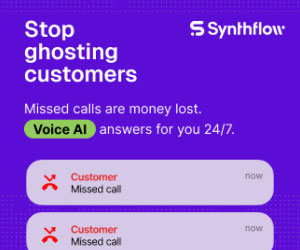Paul Cowman of Five9 discusses how customer service is changing and how to stay ahead in the contact centre.
Over the last two months, we have all experienced a change in the way we work and how we communicate with those around us.
We are living in a world where we feel comfortable standing six feet apart and where Zoom is no longer a board room brand but is now a generic household name that our parents and kids are using. Some would say that Zoom is becoming the “Band-aid” or “Kleenex” of past generations.
As Bob Dylan would say, “The Times They Are A-Changin’.”
Five9’s CEO, Rowan Trollope, likes to say: “The contact centre will change more in the next five years than the past 25 years combined.”
There is no doubt the recent shelter in place/work from home mandates will significantly accelerate this change.
With ever-improving technology, it is becoming so easy to connect and share at a moment’s notice. This is not just a consumer trend but one that is happening in the business world and no doubt customer service. Customer service is becoming so easily accessible to companies, no matter the size.
The ubiquity of technology is driving a lot of the democratization of customer experience (CX).
Below are a few points I have thought about over the last few months in relation to this topic:
1. Step one is moving to the cloud: There is a lot of talk about moving to the cloud. The reason is that the cloud allows businesses of all sizes to seamlessly go live with a remote contact centre in a matter of days.
Over the last two months and in response to COVID, technology vendors have actually been able to support a number of companies launch a fully functional call centre within forty-eight hours, and in some cases, just a handful of hours.
Enabling a 100% remote call centre workforce in just 48 hours isn’t something a business could do with an on-premise platform.
2. Step two is moving to the burbs and the acceleration of second cities: There has been a lot written on how companies are scaling work from home CX teams.
With so many companies requiring a remote workforce over the last few months, there is a likelihood that people will move out of major metros to better plan for future social distancing mandates. The odd thing is this really isn’t a new development.
Steven Case, former co-founder of AOL, wrote about this rise in his book, The Third Wave: An Entrepreneur’s Vision of the Future. It is what he calls the rise of the second cities.
Now that companies know they can manage CX remotely, which is made possible with cloud-based technologies, the question slowly shifts to will they?
Knowing the amount of overhead needed to run a call centre, will more call centres enable remote workforces or will they still require teams to be in the office?
3. It has never been easier to have more human customer service: In the past, customer service and customer experience were terms people would say kind of like digital transformation, Next Gen, etc.
There was little written about it, but everyone knew it was a buzzword that enterprises cared a lot of about. But now, there is so much data behind good CX.
Not to mention the amount of information written on the core metrics contact centre managers need to pay close attention to.
A simple Google search can provide brands with all the benchmarks they need for customer satisfaction score (CSAT), first contact resolution (FCR) or average handling time (AHT).
The metrics for better service are not only standardized but they are benchmarked by vertical, industry and likely customer type.
Additionally, these are metrics that come standard for any benchmarking report.
4. It is easier to keep staff engaged: Historically, retaining a CX team has always been the biggest challenge for call centres.
Now with gamification programs, call centre managers are able to keep CX teams engaged – even from remote locations.
5. Technology integrations: There is a lot to be said on this, but I will keep this short. Likely the biggest reason why we are seeing a democratization of customer service is because of how ubiquitous the technology is becoming.
Now more than ever, teams are able to develop call routing with simple drag-and-drop functionality. They are able plan out work schedules that better align with marketing campaigns, seasonality, social queues while connecting front-office and back-office communications platforms with a click of a button.
Cloud centre providers like Five9 are seeing this happen every day and are investing in the space.
There is no doubt that the CX space is rapidly changing and that great customer experience is accessible to companies of all sizes. Only time will tell how CX will develop over the next 5-10 years.
Author: Robyn Coppell
Published On: 19th Jun 2020 - Last modified: 14th Oct 2020
Read more about - Guest Blogs, Five9






































